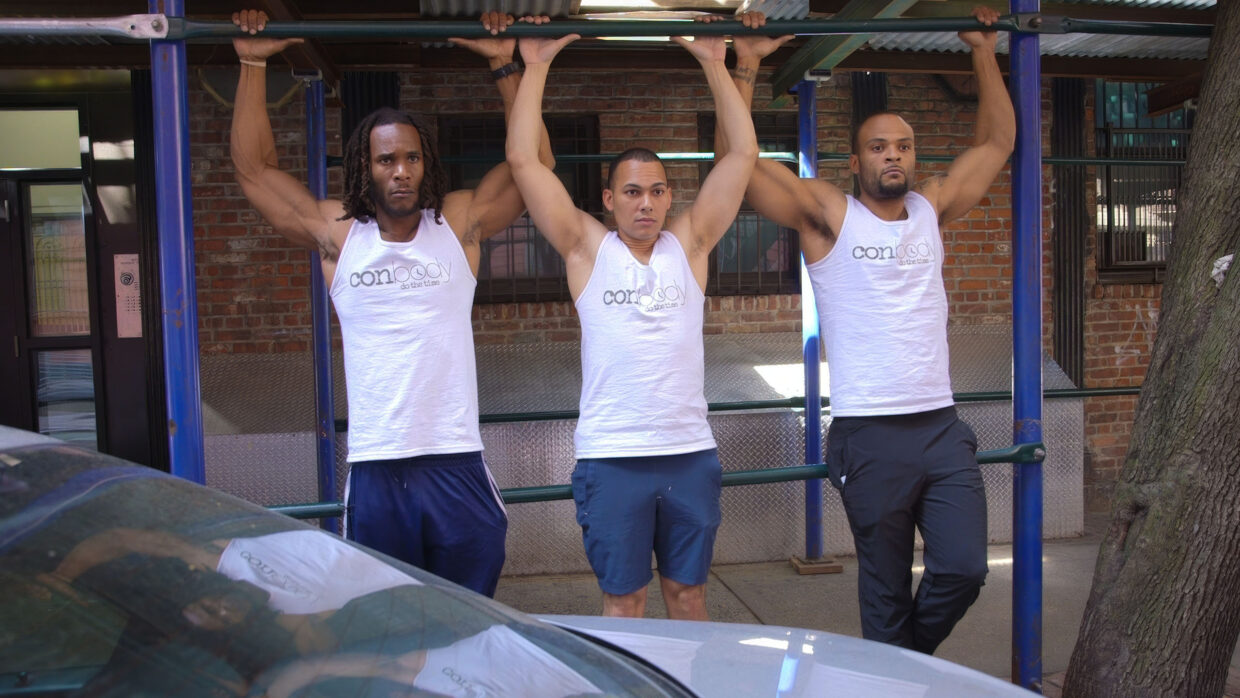 Back to selection
Back to selection
“The Lower East Side is Effulgent with the Grist of Urban Existence” | Debra Granik, Conbody VS Everybody
 Still from Conbody VS Everybody. Courtesy of Sundance Institute.
Still from Conbody VS Everybody. Courtesy of Sundance Institute. Films are made of and from places: the locations they are filmed in, the settings they are meant to evoke, the geographies where they are imagined and worked on. What place tells its own story about your film, whether a particularly challenging location that required production ingenuity or a map reference that inspired you personally, politically or creatively?
Our film, Conbody VS Everybody, takes place in the Lower East Side (LES) of Manhattan, the home of Coss, the lead participant in the documentary. The neighborhood comes with concentrated history that is inscribed on its surfaces and structures. I can’t think of too many places in the U.S. that wear their history so flamboyantly and visibly.
It’s an urban landscape super fertile for photography. By pointing a lens almost anywhere in the LES you will be rewarded with a frame of thick texture: layers of paint, concrete that is nicked and chipped, stoops with crumbled and patched parts, cracks in surfaces of what’s been built over the decades, and those surfaces in turn, pasted upon, written and painted upon, rusted, salvaged, revived.
Murals in between the buildings and side lots, graffiti peaking and receding. Tattered wheatpasted posters and stickers meld to create full frames of decades of history, with their different styles of signage, illumination, text, font, language spoken at any given time in the LES. All this packed into a 12×15 block grid. This story was shot over 8 years—and the streets were constantly being knocked down and re-built. Running as an undercurrent in Coss’s life was the rapid gentrification of his neighborhood that was playing out as we followed the story. This meant that the folks who grew up in the LES had to fight and figure out how not to be displaced by people who wanted to move in and take over. And that made place itself a major theme, with the stakes of being able to stay in a place to which you’re attached, that is essential to belonging to your city.
As if the surfaces, textures, hyper contrasts between old and new construction and collaged geometry of the LES aren’t enough to keep one in a photographic trance, there’s the human and mechanical physicality of the LES—a place of perpetual motion. Vendors laying out shimmering fish on beds of ice next to urchins, lychees, nuts, all manner of Asian and Caribbean produce, the setting up, arranging, measuring, selling. The constructing, hauling, chopping, cutting, steaming, searing. The hand trucks crisscross the intersections, bikes weave in all directions, buses roar past the morning dance of pallets and forklifts. The anarchy of what can wipe your frame keeps you going; the LES is never shot out.
Place and hood go deep for the main character, Coss, and his family. He believes those very streets made him who he is. Growing up, his Dominican community was sharing the streets with the Chinese immigrants. For Coss, places such as the Chinese-Hispanic Grocery epitomize the proximity and mutual influence. We loved filming a bodega sign that summarized the sociology of the intersection.
The bodegas, stoops, and stairwells—these are key spots for the lead participant’s biography, the places where his early years and influences unfolded. Hustles, legal and illegal, side by side, decade after decade. The ongoing daily life of scrappy survivors and hustlers in the act of making it happen. The LES is effulgent with the grist of urban existence. It’s very hard to wrap and stop shooting. You’re so grateful that at that moment your job is to look through a lens at such a complex cauldron of diverse, pulsing life.
See all responses to our annual Sundance Question here.
